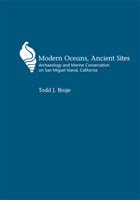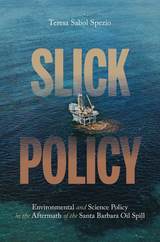2 books about Santa Barbara Channel

Modern Oceans, Ancient Sites
Archaeology and Marine Conservation on San Miguel Island, California
Todd J Braje
University of Utah Press, 2010
There is a growing consensus in the scientific realm that the world’s oceans are reaching a state of crisis as commercial fisheries are more widely overexploited and many coastal ecosystems are approaching collapse. A number of scientists and resource managers have argued that a successful understanding of the current crisis can be found through the development of a deeper historical perspective of the ecology of coastal ecosystems and the impacts that humans have had on them. In Modern Oceans, Ancient Sites: Archaeology and Marine Conservation on San Miguel Island, California, Todd Braje works to provide just such an understanding, bridging the divide between the archaeological record and the modern crisis.
Using archaeological, paleoecological, and historical datasets from California’s Channel Islands and the larger Santa Barbara Channel region, Braje explores the evolving relationship between humans and fragile island ecosystems. San Miguel Island, westernmost of the Northern Channel Islands, holds archaeological records spanning 10,000 years, providing a backdrop for the examination of changes in human demography, subsistence, and technology over time. Braje’s systematic excavations of five well-preserved sitesranging from a 9500-year-old shell midden to a 150-year-old abalone fishing camptranslate into a long-term case study that enables a unique assessment of the human impacts on marine ecosystems.
Modern Oceans, Ancient Sites: Archaeology and Marine Conservation on San Miguel Island, California helps to provide a more complete picture of human sea and land use through time, offering vital information for understanding, interpreting, and managing the past, present, and future of both the Channel Islands and global marine ecosystems. Braje demonstrates the relevance of archaeological, historical, and paleoecological data to extant environmental problems and concludes with tangible and practical recommendations for managing modern marine ecosystems and fisheries.
[more]

Slick Policy
Environmental and Science Policy in the Aftermath of the Santa Barbara Oil Spill
Teresa Sabol Spezio
University of Pittsburgh Press, 2018
In January 1969, the blowout on an offshore oil platform off the coast of Santa Barbara, California, and the resulting oil spill proved to be a transformative event in pollution control and the nascent environmental activism movement. It accelerated the advancement of federal government policies and would change the way the federal government managed environmental pollution. Over the next three years, Congress worked to pass laws such as the National Environmental Policy Act and the Clean Water Act, and revolutionized the way that the United States dealt with environmental pollution. At the same time, scientists developed methods to detect chemical pollution that had been discharged into rivers and streams by industrial facilities.
Slick Policy presents an original and in-depth history of the 1969 Santa Barbara spill. Teresa Sabol Spezio provides a background of water pollution control, government oversight of federally-funded projects, and chemical detection methods in place prior to the spill. She then shows how scientists and politicians used public outrage over the spill to implement wide-ranging changes to federal environmental and science policy, and demonstrates the advancements to offshore oil drilling, pollution technology, and water protection law that resulted from these actions.
Slick Policy presents an original and in-depth history of the 1969 Santa Barbara spill. Teresa Sabol Spezio provides a background of water pollution control, government oversight of federally-funded projects, and chemical detection methods in place prior to the spill. She then shows how scientists and politicians used public outrage over the spill to implement wide-ranging changes to federal environmental and science policy, and demonstrates the advancements to offshore oil drilling, pollution technology, and water protection law that resulted from these actions.
[more]
READERS
Browse our collection.
PUBLISHERS
See BiblioVault's publisher services.
STUDENT SERVICES
Files for college accessibility offices.
UChicago Accessibility Resources
home | accessibility | search | about | contact us
BiblioVault ® 2001 - 2024
The University of Chicago Press









